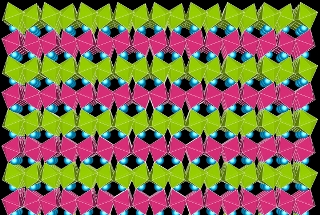Sep 8 2015
A new joint study carried out by SISSA and Northwestern University researchers proposes a theoretical model for developing materials that exhibit both magnetism and ferroelectricity.
 Credits: James Rondinelli
Credits: James Rondinelli
These properties are highly desired in materials, rendering them useful in technological applications, ranging from computer memory to sensors. Materials that exhibit both these properties are highly sought after for such applications. Currently, most materials have known to exhibit either one of these properties, and not both.
Magnetism is a characteristic, which is well known for empirical applications; it causes the compass needle to deflect towards the North Pole. In the presence of a magnetic field, some materials experience an alignment of magnetic moments or the spin of electrons. Ferroelectricity on the other hand, is when magnetism exists in an electric form. Materials that are ferroelectric retain electric polarization even after the removal of the electric field that caused polarization. Individually, both these properties are suited for technological applications, but the scope of their applications increases when they both coexist in the same material. Nevertheless, at present these two properties are mutually exclusive.
Coexistence of magnetism and ferroelectricity in the same material may soon happen. Researchers from SISSA and Northwestern University at Illinois, USA, have taken an entirely new approach to create “multiferroic” materials. Their findings have been published in the Physical Review Letters – a review journal.
“Ours is certainly not the first attempt at obtaining a material of this kind, but up to this point there has been little in terms of satisfying results,” notes Massimo Capone, SISSA researcher and one of the authors of the study. “Our method is based on a surprising system.” Capone and his colleagues’ work is a theoretical study which will serve as a guide for developing the material itself.
“Our approach is based on creating a sort of sandwich with layers of Lithium Osmate, a ferroelectric metallic material, alternating with insulating material. Adding insulation causes magnetic properties to emerge from two non-magnetic materials. This arrangement, which we refer to in jargon as heterostructures, slows down electrons in the system, and it is this phenomenon that leads to the emergence of magnetism,” explains Gianluca Giovanetti, SISSA/CNR IOM researcher, and one of the authors of the study.
“Our theoretical model shows a clear effect, and furthermore, we show that it is possible to control ferroelectricity with magnetism, another important property,” concludes Capone. “The next step will be to test the material itself.”